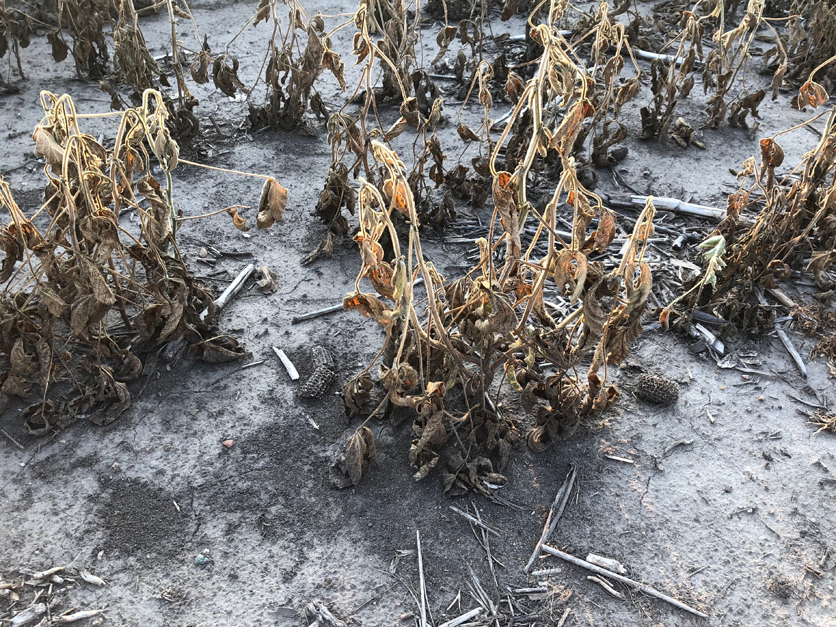Crop insurance for corn, soybeans and wheat will cost more because of the expected effects of climate change on yields, the Economic Research Service concluded in a report made public Monday.
ERS said all of the scenarios it considered “suggest that climate change would lower domestic production of corn, soybeans, and wheat" compared to a future scenario with climate identical to that of the past three decades.
"On average, climate models project declining average corn and soybean yields, while changes to winter wheat are modest and variable," ERS said. "Losses are generally largest in the southern United States and in dryland production. This is consistent with the known vulnerability of corn and soybean yields to extreme heat, which is projected to increase across all climate scenarios."
Climate changes is likely to reduce water supplies, ERS said. "Changes to precipitation and increased average temperature are likely to reduce surface water supplies in many regions and also reduce groundwater availability by altering recharge rates," the report said.
Lower yields will translate to higher prices, which "implies higher premiums and, consequently, higher subsidies,” ERS found. “Foreign supply or demand changes that are driven by climate change would mitigate or exacerbate this effect,” but ERS did not model production in the rest of the world.
Using the year 2080, a “representative year” from the second half of this century, ERS found that the cost of the Federal Crop Insurance Program would increase 3.5 percent under a “moderate emissions scenario” and by 22 percent under a “higher emissions scenario.”
In the report, entitled “Climate Change and Agricultural Risk Management Into the 21st Century,” ERS said, “On average, climate models project declining average corn and soybean yields, while changes to winter wheat are modest and variable.”
ERS said it focused on those three crops because they “make up 55 percent of agricultural land use, but 65 to 75 percent of the total premium subsidy costs of the FCIP.”
ERS said that while it explicitly modeled the FCIP, “our results have implications for any agricultural risk management program that provides benefits in response to yield or price shocks. This includes the current versions of the Agriculture Risk Coverage and Price Loss Coverage programs managed by the Farm Service Agency.”
“The insurance cost increases would be higher if the analysis did not account for adaptation to climate change,” ERS said. “While not all possible forms of adaptation are included, this study explicitly accounts for how farmers may change what they plant, where they plant it, and how they manage it in response to changes in expected yields and prices.”
Without factoring in adaptation, “the estimates of cost increases would jump to 10 percent and 37 percent, under the moderate and severe greenhouse gas concentration scenarios, respectively,” ERS said.
The impact of lower yields and higher commodity prices on the cost of crop insurance varied considerably by crop, ERS found.
Under the moderate emissions scenario, the cost of the program for corn declines, the report found, but under the higher emissions scenario, the cost increases 11 percent.
The cost for soybeans increases by about 27 percent under the moderate-emissions scenario but jumps to 65 percent under the higher emissions scenario, "reflecting increases in soybean prices and price risk, as well as more uniform and higher proportional increases in yield risk," ERS said. "Changes in cost for winter wheat are small."
U.S. agriculture has enjoyed “relative climatic stability” for nearly 250 years, ERS said. However, “Evidence has accumulated in recent years … that long-term temperature averages are shifting with the buildup of heat-trapping gases in the atmosphere. In addition to average temperature, shifts in seasonal patterns of temperature, precipitation, and other variables have been observed.”
For more news, go to www.Agri-Pulse.com


